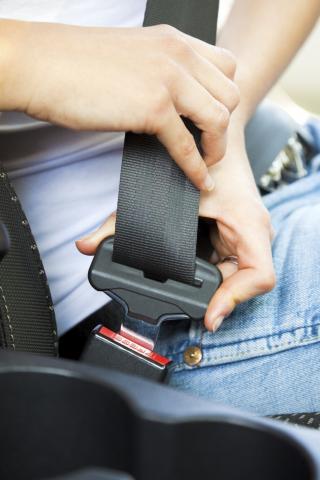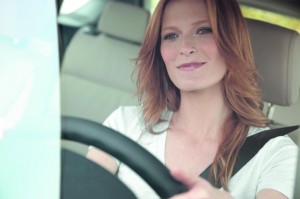
18 November 2014 - Highlighting their ongoing commitment to road safety, BMW Group Middle East is marking the World Day of Remembrance for Road Traffic Victims (WDR) by urging drivers and their passengers to buckle up.
Commemorated annually on the third Sunday of November WDR is endorsed by the United Nations. This year on 16th November 2014, the occasion will remember the millions killed and injured on the world’s roads as well as their families and many others also affected. There will also be a special reflection on the tremendous burden and cost of this global problem.
“BMW Group Middle East launched its ‘Stay Alert. Stay Alive’ road safety campaign in 2010 as part of its commitment to raise awareness of the importance of wearing seatbelts. WDR provides us with a great opportunity to reinforce this messaging in line with such a credible global awareness day,” said Leanne Blanckenberg, Corporate Communications Manager of BMW Group Middle East.
The premium automotive manufacturer’s Stay Alert. Stay Alive. road safety campaign puts the following questions to drivers and urges them to buckle up:
- Do you buckle up as soon as you get in the car?
- Do you insist that your passengers wear a seatbelt?
- Do your children have the right car seat safety restraints for their weight and age?
If you have answered no or even just once, then you need to read the following five reasons why you should to buckle up…
- 1. Seatbelts Save Lives and reduce injuries
According to the World Health Organisation (WHO), wearing a seatbelt reduces the risk of a fatality among front seat passengers by 40-50% and among rear seat car occupants by 25-75%.
- 2. It’s the Law
Wearing a seatbelt while driving or as a passenger is the law and any person found not to be buckled up will face a considerable fine. Similarly, if a child is over 10 years old they must wear a seatbelt, while children less than 10 years old must be restrained using the correct type of child seat.
- 3. Seatbelts = Life
According to the laws of physics, if a vehicle is travelling at 120 kilometres per hour, its contents and passengers are also moving at 120 kilometres per hour. A sudden stop or head-on collision at 120 kilometres per hour can mean the difference of life or death to the passengers wearing seatbelts. In a road traffic accident, passengers who are not buckled up will fly toward the point of impact, colliding with anything in their path such as dashboards, windshield or steering wheels with several pounds of moving force.
Seatbelts are designed to stop the uncontrolled movement of people within a vehicle and therefore one of the most important tools to prevent serious injury or death in a road traffic accident.
- 4. Even the best drivers have accidents
Your driving experience and confidence levels will not account for the often unpredictable actions of other drivers. Even the most skilled drivers cannot be 100 percent certain of the ability to prevent an accident when another driver is at fault. It is therefore essential that every driver and passenger wears a seatbelt any time they are in a moving vehicle.
- 5. Seatbelts Reduce Child Fatalities
Children are not small adults – they need specialised protection in a moving vehicle. Until the age of seven, children’s bones are still forming, which means they must be protected from the force of an accident. Babies’ skulls are extremely flexible and even a small impact can result in significant deformation of the head and brain. Also, an infant’s rib cage is still elastic, and any impact to the chest can damage the heart, lungs and other internal organs. At this age, the pelvis is unstable and cannot withstand the forces from the use of regular seat-belts featured in your car. Therefore, appropriate child restraints are essential to reduce the risk of injury.
It is essential for you as a parent to make sure that you use the right restraint for your child’s age and size. There are different seats available and the selection of the appropriate one is crucial in ensuring that your child is effectively protected:
- Rear-facing Infant Car Seat: Designed for infants under the age of 1 year, they provide the best protection until the infant is both one year of age and weighs at least 13 kg. At BMW, this is known as BMW Baby Seat 0+.
- Child Safety Seat: Targeting toddlers aged 1-4 years; they secure your child and spread the crash forces over a wide area. This seat should last until either the child’s weight exceeds 18 kg or it grows too tall for the seat. At BMW, this is known as BMW Junior Seat I-II.
- Booster Seat: Made for small children aged 4-6 years, it works by raising the child to the correct height for the car’s adult seat-belt to work properly. It has a seat back that can provide additional protection in the event of a side impact. The booster seat should be used until the child is approximately 145 cm tall. At BMW, this is known as BMW Junior Seat II-III.
- Booster Cushion: The final option before your child transitions to the three-point lap and diagonal seat-belt featured in your car and is designed for children aged 6-11 years that weigh from 22 to 36 kg. Some manufacturers are now producing backs that cover the full 15 to 36 kg range. At BMW, these are known as BMW Booster Cushions.
Note to Editors:
Bassoul-Heneine sal:
Bassoul-Heneine sal is the exclusive importer of the BMW Group in Lebanon, and the oldest BMW importer in the world. Throughout its illustrious history, dating back to 1951 with the establishment of Bassoul-Heneine & Co., the company has built a wealth of expertise, knowledge and trust among its loyal customers desiring BMW and MINI automobiles.
For questions please contact:
Bassoul-Heneine sal
Email: nkhalife@bashen.comCategories
- Log in to post comments
